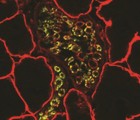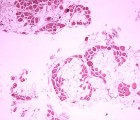Background: In the absence of a curative treatment for Duchenne Muscular Dystrophy (DMD), corticosteroid therapy (prednisone, deflazacort) has been adopted as the standard of care, as it slows the progression of muscle weakness and enables longer retention of functional mobility. The ongoing development of novel pharmacological agents that target the genetic defect underlying DMD offer hope for a significant alteration in disease progression; however, substantiation of therapeutic efficacy has proved challenging. Identifying functional outcomes sensitive to the early, subtle changes in muscle function has confounded clinical trials. Additionally, the alterations in disease progression secondary to corticosteroid therapy are not well described making it difficult to ascertain the benefits of novel agents, often taken concurrently with corticosteroids.
Objective: The purpose of this study was to examine outcome responsiveness to corticosteroid therapy and age at the onset of a natural history study of ambulatory boys with DMD.
Methods: Eighty-five ambulatory boys with DMD (mean age 93 mo, range 49 to 180 mo) were recruited into this study. Fifty participants were on corticosteroid therapy, while 33 were corticosteroid naïve at the baseline assessment. Within each treatment group boys were divided in two age groups, 4 to 7 years and 8 and greater years of age. The Biodex System 3 Pro isokinetic dynamometer was used to assess muscle strength. Motor skills were assessed using the upper two dimensions (standing/walking, running & jumping) of the Gross Motor Function Measure (GMFM 88) and Timed Motor Tests (TMTs) (10-meter run, sit to stand, supine to stand, climb 4-stairs). Two way analysis of variance and Pearson correlations were used for analysis.
Results: A main effect for age was seen in select lower extremity muscle groups (hip flexors, knee extensors and ankle dorsiflexors), standing dimension skills, and all TMTs with significantly greater weakness and loss of motor skill ability seen in the older age group regardless of treatment group. Interaction effects were seen for the walking, running, and jumping dimension of the GMFM with the naïve boys scoring higher in the younger group and boys on corticosteroid therapy scoring higher in the older group. The TMT of climb 4-stairs demonstrated a significant treatment effect with the boys on corticosteroid therapy climbing stairs faster than those who were naïve, regardless of age. Examination of individual items within the upper level GMFM dimensions revealed select motor skills are more informative of disease progression than others; indicating their potential to be sensitive indicators of alterations in disease progression and intervention efficacy. Analysis of the relationship between muscle group strength and motor skill performance revealed differences in use patterns in the corticosteroid versus naïve boys.
Conclusion: Significant muscle weakness is apparent in young boys with DMD regardless of corticosteroid treatment; however, older boys on corticosteroid therapy tend to have greater retention of muscle strength and motor skill ability than those who are naive. Quantification of muscle strength via isokinetic dynamometry is feasible and sensitive to the variable rates of disease progression in lower extremity muscle groups, but possibly most informative are the subtle changes in the performance characteristics of select motor skills. Further analysis of longitudinal data from this study will explore the influence of corticosteroid therapy on muscle strength and further clarify its impact on motor performance.



